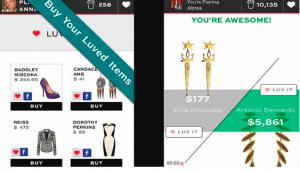The fashion world has historically been relatively insular, borrowing culture, technology and art to further its own ends. It could do that because it existed on a plane outside of society at large – more art than attire. But as technology’s evolution has effectively broadened each individual’s sphere to a mammoth degree, the exclusivity of fashion now seems almost a little quaint. Why should one put stock in what the fashion gods are doing on high when one can use technology to follow the evolving aesthetic adventures of much more vibrant creative types across the globe?
Which isn’t to say that the rise of social media or the near-ubiquity of advanced GPUs and other innovations from companies like Snapdragon signals the death of the fashion industry. Far from it. There has always been fashion and will always be fashion, but it won’t be the insider-only seasonal couture shows shaping ready-to-wear from here on. The fashion world is cracking wide open thanks to real-time reporting and the now omnipresent hashtag. Fashion bloggers armed with nothing but Instagram are becoming famous in their own right.
And the big players in the industry are starting to experiment with tech, creating a unique overlap of fashion and technology that is changing how we interact with wearable art.
Maybe it should come as no surprise that the sartorial realm is embracing the app. The Entertainment Software Association published statistics showing that adult women – who drive the majority of consumer spending in the US – make up the largest video game playing demographic in the nation. Women have also proven more receptive to advertising – including mobile advertising. The ascendance of luxury fashion and lifestyle games with integrated brand placement was all but inevitable.
CrowdStar’s hugely popular Covet Fashion app is proof of concept. It’s a relatively simple virtual closet game with big names attached, including CBG Max Azria, Rebecca Minkoff, Kara Ross and Rachel Zoe plus pieces from 150 big name fashion brands, but simple as it is it’s practically addictive. The game Fashion Eye features the work of Chanel, Bottega Veneta, Lanvin, Tom Binns and Kara Ross, putting those brands in front of consumers who might have considered designer labels out of reach. Why? Analysis of player habits suggests that high-end fashion apps command more engagement than other games and may be more likely to influence consumer opinions.
Meanwhile, the fashion world continues to inch cautiously into the wearable tech sphere. Those with high hopes for Intel’s MICA smart bracelet and the Ringly smart ring can’t deny that these and other fashion-forward options have fallen flat when pitted head to head against wearables like the Apple Watch – and even that is more of a niche tech product than a sartorial must-have. Smart fabrics, smart bags and all the other smart styles sashaying down some runways are still very much a novelty. Or to put it another way, wearable tech is not quite ready for ready-to-wear.
Much like the tech development cycle, the cycle of fashion has become continuous thanks to our always-on, uber-connected world. So there is obviously a huge opportunity for app and game developers and hardware companies to partner with the fashion industry to harness the buying power of women. As John McCrea, chief marketing officer of MediaSpike, told the Financial Times: “What we do in virtual worlds reflects and influences our intentions in the real world.” This may be true, but it’s also true that luxury brands and the swarming entourages that revolve around them are sometimes slow to innovate outside of their comfort zones. Whether the fashion industry makes the most of the opportunity now before it remains to be seen.
Jennifer Thayer is an editor at the technology blog Freshly Techy. She enjoys covering other subjects like entertainment, food, and deals. Follow her on Twitter to see what useful tricks and fun tips she uncovers next.












Leave A Comment
You must be logged in to post a comment.